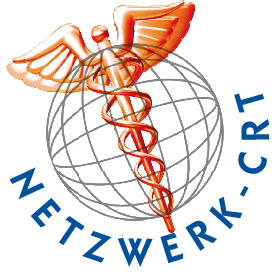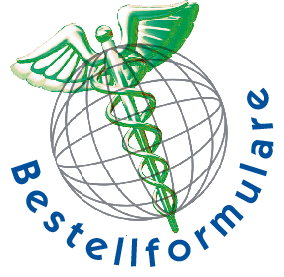NETWORK – Globalhealth
Information for Physicians

Faculty of Thread lift
Information on treatment of soluble suture materials (PDO, PCL, PLLA threads), the procedure and membership
Search for doctors
If you are looking for a certified doctor, follow this link:
Search for doctors
Patient information
Attention! This page is intended for doctors!
Patients, who would like to inform themselves about the therapy, we still ask for a little patience. Patient information on the topic of thread lift is still in preparation.
Note for physicians
The information provided here is in no way a substitute for hands-on trainings in how to carry out the therapy. Please contact us if you are interested.
Topic navigation
Department Thread lift has developed standardized protocols for the use of resorbable threads. We reject the use of permanent threads. It is important for us to intensively familiarise ourselves with this therapy, above all in order to protect patients and our members from unwanted complications. We also attach particular importance to testing the quality of resorbable suture materials (PDO, PCL, PLLA) from various manufacturers
Therapy
After several years of research into the possibilities and risks of this aesthetic therapy approach, we decided in 2016 to establish the Department Thread lift. On the one hand, we see great potential for this therapy with new treatment options for skin tightening and improvement and, on the other hand, the necessity of further investigation and standardization.
The scientific basis for the application has been developed for several years by Dr. Dorina Donici, Moscow and Dr. Jung-Hyun Yoon, Seoul, in a very comprehensive animal experiment on white Yucatan pigs with skin very similar to that of humans.
The results of these studies form the basis of our treatment concept. The following different effects could be proven:
- Mechanotransduction through tissue effects produced by the cannula, needle or the threads themselves (physically, chemically)
- Fibroblast stimulation
Conversion of fibroblasts into myofibroblasts
Improvement of cell metabolism - Collagen Regeneration / Neocollagenesis
- Neovascularisation
- Stimulation of growth factors
- Lipolytic effect
The mechanism of action described here is produced by pulling different sutures into different depths (intradermal, subdermal, subcutaneous above the SMAS), some of which are additionally stimulated by rotation to achieve the greatest possible tissue effect.
We use three different materials, but we would like to add that the development of new sutures is continuous and far from complete.
- Monofilament threads are drawn in very superficially in a lattice structure (criss-cross at intervals of 1-2 months) in two sessions at a small distance. They form the basis and change skin structures in order to use the other materials in further treatment steps.
- Spiral threads have a larger surface and additionally a moderate tensile effect. They can be used to treat the eye region, mouth region or nasolabial fold.
- Cogs or Barbs have small hooks built into them which are firmly anchored in the tissue. Especially the multidirectional Cogs have optimal traction properties.


Materials
In 1999 the first attempts were made to lift the face with threads, then still with permanent threads (Aptos polypropylene threads). In the decade that followed, further permanent filaments were developed (gold, platinum). The results were only conditionally good, many doctors banned this technique from their treatment spectrum after initial tests, because simply too many side effects and complications occurred (the stitches grew out of the skin, granuloma formation). Only with the use of polydioxanone (PDO) sutures and other resorbable materials was it possible to prevent side effects in a very effective way. PDO has been used for decades in surgery as a dissolvable suture. Therefore, the effect of this material has been very well investigated.
Nowadays, nearly all sutures – regardless of the manufacturer – are made in Korea. There are over 40 different manufacturers of thread materials there, including very good and renowned ones and many smaller ones. The quality of the threads produced is not the same.
Our research is focused on the materials themselves, but also on the auxiliaries. For example, cheap needles from China often contain metal dusts that can trigger serious side effects or complications.
Since we always see ourselves as advocates of patients, we also examine the treatment protocols developed by various manufacturers for their effectiveness.
Education and Training
Workshops are offered by the various manufacturers, some of which last only half a day or one day. We have decided to oppose this sales-oriented concept with our own.
Since the introduction of our advanced training, we have developed the sophisticated training concept that we consider necessary for thread treatment in order to incorporate a safety architecture for all participants. This concept will be further refined and developed in the coming years.
At the moment it consists of 3 training units:
- Anatomy course by Prof. Sebastian Cotofana with the segments botulinum, filler, injection lipolysis and threads. This innovative and newly developed advanced anatomy course is an unconditional recommendation for beginners in aesthetics.
- Thread 1: Theory and hands-on training of the standardized treatment protocol with monofilament threads with a maximum of 12 participants.
Here the basics are laid for the admission of own treatments. The already very well developed standard protocol is also explained practically by experienced therapists on the patient during the treatment. - Thread 2: Hands On course with 6 participants.
The training concentrates on spring/spiral/tornado threads and the deeper lying traction threads (Cogs, Barbs) which are easy to insert.
Our plan is to expand the range of hands-on training in the future, starting with simpler treatments and progressing to more difficult indications.









